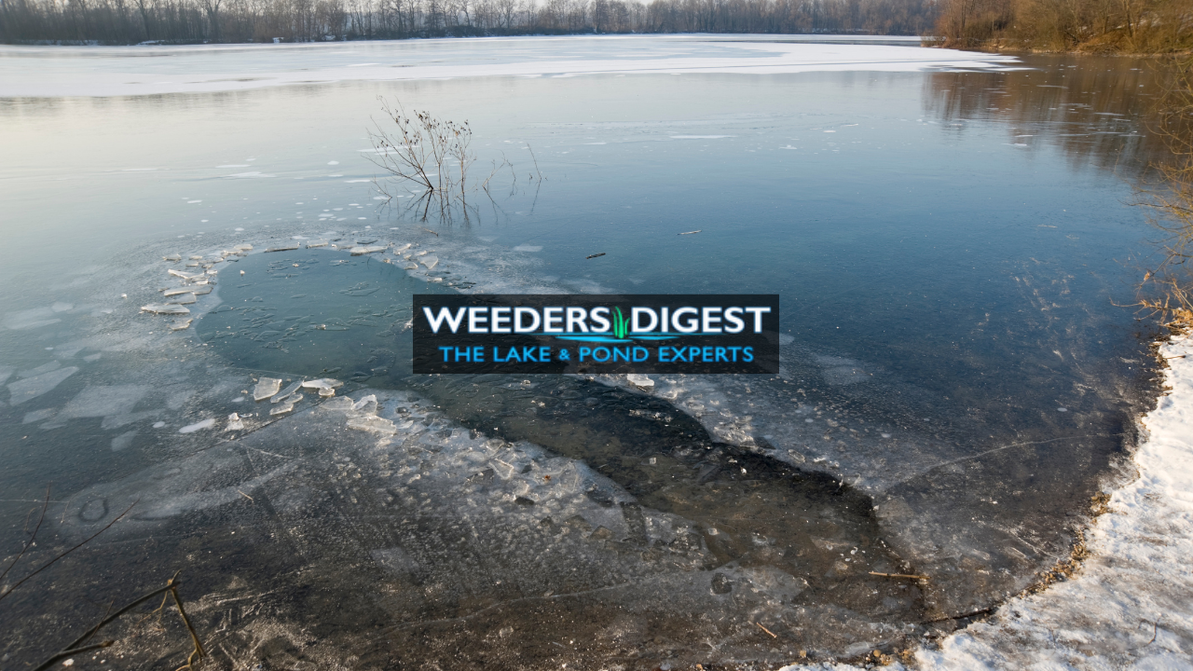Muck Control for Ponds and Lakes: How to Manage Winter Buildup the Natural Way
If you’ve waded into your pond or lake and felt that soft, squishy layer at your feet, you’ve met muck. It’s the buildup of decaying leaves, algae, fish waste, and other organic material that settles over time. A little is normal in any natural body of water, but when muck starts piling up, it can cloud the water, create odors, and put stress on fish and beneficial organisms.
Winter often makes the problem more noticeable. Cold temperatures slow natural decomposition, and ice cover limits oxygen exchange. Many lake and pond owners assume nothing can be done until spring, but winter is actually a smart time to get ahead of muck before the warm weather returns. The key is knowing what treatments work in cold water and what should wait until the thaw.
Below, we’ll walk through why winter muck builds up and the most reliable ways to reduce it safely, naturally, and effectively.
Understanding Winter Muck Buildup
Think of muck as the compost pile at the bottom of your lake or pond. Every season adds new material: fallen leaves, dead vegetation, fish waste, and organic debris from the shoreline. As this settles, bacteria break it down into a dark, nutrient-rich layer.
During winter, that natural cleanup crew slows down. Less oxygen, lower temperatures, and reduced circulation all work against healthy breakdown, allowing muck to linger or grow.
Excess muck can:
• Release nutrients that fuel algae and weed growth once temperatures rise
• Consume oxygen needed by fish and beneficial bacteria
• Produce odors from trapped gases
• Limit the habitat available for bottom-dwelling organisms that keep the ecosystem balanced
Some people hope muck will disappear on its own, but in most natural ponds and lakes, it accumulates faster than nature can keep up. Mechanical removal, like dredging, is an option but usually costly and disruptive. Natural treatments can make a meaningful difference, even in winter, if you choose the right ones.
Eco-Friendly Winter Muck Control Solutions
1. Cold-Water Beneficial Bacteria
Beneficial bacteria are one of the most effective winter tools available. They digest organic material on the bottom, converting it into harmless byproducts. But not all bacteria work the same. Standard warm-water blends slow dramatically once water temperatures drop.
Cold-water bacteria are different. They’re designed to stay active in chilly conditions, which makes them ideal for winter muck reduction in natural lakes and ponds.
Best Option for Winter:
Cold Water Muck Tablets from Weeders Digest These tablets sink directly into the muck layer and introduce a blend of bacteria that stay active in cold water. Over the winter months, they help reduce muck buildup and set the stage for a cleaner spring.
2. Aeration Systems
Aeration is one of the healthiest long-term strategies for reducing muck in both ponds and lakes. Adding oxygen improves water circulation, boosts bacterial activity, and prevents stagnant zones where muck tends to accumulate.
In winter, only one style of aeration is appropriate: bottom-diffused aeration. These systems sit on the bottom and push bubbles upward, gently moving water throughout the entire water column without creating surface agitation.
Why this matters in winter:
Surface fountains and surface aerators must be removed before freezing conditions. They can be damaged by ice and also create thin or open ice that is unsafe to walk on.
Recommended Systems:
Weeders Digest offers bottom-diffused aeration packages designed for year-round use. They are efficient, reliable, and a strong foundation for long-term muck control.
Smart Steps for Long-Term Muck Prevention
While winter is a great time to get ahead of muck, long-term success comes from steady habits throughout the year. One of the simplest and most effective practices is reducing the amount of organic material that enters the water. Keeping the shoreline clear of fallen leaves and plant debris helps limit the fuel that eventually becomes muck on the bottom.
Maintaining consistent oxygen levels is another important piece of the puzzle. A bottom-diffused aeration system supports healthy decomposition all year long, helping beneficial bacteria do their job and preventing stagnant areas where muck tends to accumulate.
It also helps to limit excess nutrients from entering the water. Minimizing fertilizer use near the shoreline and keeping natural vegetation in place around the water’s edge creates a buffer that absorbs runoff before it reaches your pond or lake. These small steps add up to cleaner water and a healthier ecosystem over time.
A Healthier Pond or Lake Starts Now
Winter muck control doesn’t have to be complicated. With the right bacteria and a reliable aeration system, you can make meaningful progress even under the ice. These steps support a cleaner bottom, a healthier ecosystem, and a smoother transition into spring.
At Weeders Digest, we specialize in natural solutions for true ponds and lakes. Our team is available to help you choose the best products and build a year-round plan that keeps your water healthy, clear, and enjoyable.
Recent Posts
-
Winter Pond Maintenance: Protecting Your Pond From Freezing
When winter arrives and temperatures start to drop, pond owners begin watching the weather a little …10th Dec 2025 -
Choosing the Right De-Icer for Your Pond: A Seasonal Guide
When cold weather settles in, pond and lakefront owners start thinking about winter protection. One …3rd Dec 2025 -
Muck Control for Ponds and Lakes: How to Manage Winter Buildup the Natural Way
If you’ve waded into your pond or lake and felt that soft, squishy layer at your feet, you’ve met mu …26th Nov 2025





